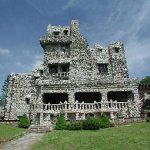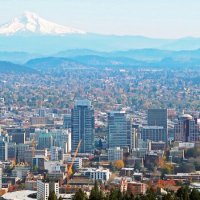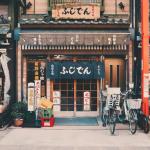Tranquil Temples and Gorgeous Gardens of Kyoto
Japan’s capital for over one thousand years, it’s not surprising that Kyoto still bears a close resemblance to its past glory. The city has many UNESCO world heritage sites which alone are enough to warrant a visit. It also boasts a still-working Geisha district, some of the country’s most fantastic cuisine, and all the Zen you could hope for.
Kinkaku-Ji

The most iconic of the Zen structures to be found is the Kinkaku-Ji, or the Golden Temple. Whether you visit in winter, and see it set against snow-capped hills, or in the summer when its backdrop is lush and green, nothing beats the serenity of this gold-leaf coated temple’s reflection rippling off the river that surrounds it. This is arguably the most beautiful of the UNESCO world-heritage sites in Kyoto.
Ryoan-ji

Ryoan-ji Temple or ‘The Temple of the Dragon at Peace’ is a dry rock garden, closely resembling the mini-Zen gardens found in curio shops, although this is the ‘real deal’. Nobody knows who designed it or why, or what the meaning is of the 15 rock and grass islands scattered among the raked, dry white gravel. Some say they represent clouds in thy sky, or islands in the ocean, while others posit that they represent a map of Chinese Zen monasteries. Whichever answer sounds right to you, there is no better place to contemplate life’s mysteries than in Ryoan-ji.
Saiho-Ji

This temple, famed for its incredible moss garden, is more commonly referred to as Koke-Dera, or `moss temple`. Due to the large number of tourists that would come to see the temple, the previously open-to-anyone Saiho-Ji now has a few hurdles in place to preserve the fragile moss that covers most of the ground surrounding the temple.
Reportedly built during the Nara Period (710 – 794 AD) by Gyoki, it fell into disrepair. It was only in 1339 that a chief of the nearby Matsunoo Shrine called on famous Japanese gardener Muso Soseki to help him revive Saiho-Ji as a Zen temple. Since then the temple was destroyed by fire during the Onin War, and then ravaged twice by floods during the Edo period (1603-1868), in which the moss is believed to have established itself.
Kiyomizu-dera

Founded during the early Heian period, Kiyomizu-dera was built in 798 AD, though the building as it stands now was constructed far later, in 1633. Incredibly, not a single nail was used in the construction of Kiyomizu-dera. Its name is taken from the waterfall that runs through it: Kyomizu means “pure water”.
The Otowa waterfall which runs through the temple is made up of three separate channels that fall into a pond. Visitors to the temple are encouraged to drink the water from the pond as it is believed to have wish-granting powers. Especially impressive and popular during summers, when obon (a holiday honouring the spirit of one’s ancestors) is held, the complex of shrines offers visitors various incenses, talismans and omikuji, or paper fortunes.
These are just a few of the myriad of delightfully Zen gardens that are to be found in Kyoto. Visiting Japan can be a very enjoyable experience. There are many helpful information online, such as Japan tourist guides, Japan maps, best hotels for Japan, best VPN for Japan and much more. Hope you enjoy your trip to Japan!
More to Read:
Previous Posts:





